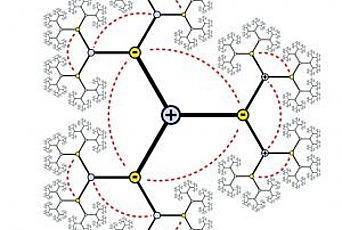The Abel Prize and Curiosity-Driven Research

On May 21, King Harald V of Norway presented the Abel Prize of the Norwegian Academy of Science and Letters to Pierre Deligne, Professor Emeritus in the School of Mathematics. In his acceptance speech, published here, Deligne articulates the essential role of freedom and curiosity in research––as the source of most of the important applications of sciences and as a powerful incentive to do the best work possible. The Institute is deeply grateful to Deligne, who has donated a portion of his monetary prize to support curiosity-driven research in the Institute’s School of Mathematics.
Your Majesty, Minister, Excellencies, colleagues, family, friends, and guests,
I am very honored that this Abel Prize associates me with the luminaries who received it before me, amongst whom are my teachers and mentors Jacques Tits and Jean-Pierre Serre.
The past century has been a golden century for mathematics. When I look back, I am amazed at all the questions that in my youth seemed inaccessible, but which have now been solved. The last half-century has also been a golden time for mathematicians, but I worry that the prospects for young people are now far from being as good.
Throughout my life, I have received crucial help from many people and institutions. This for me is an occasion to give thanks.
My first debt of gratitude is to Mr. Jeff Nijs. Mr. Nijs was a high school teacher. I first met him at age twelve as the father of a friend. He noted my interest in mathematics, protected it, nourished it by giving me my first serious mathematical books (a risky and felicitous choice: Bourbaki’s set theory), and by arranging the possibility for me to borrow books from the Bibliothèque Royale de Belgique. Later, he introduced me to Jacques Tits.
It was fortunate for me that, up to 1964, Tits was a professor at the Free University of Brussels. I learned much from him, and when I was twenty, he told me to go to Paris, where I benefited from Serre’s deep and luminous lectures at Collège de France and from Grothendieck’s seminar at IHÉS. In due time, Serre also offered me suggestions that proved crucial. One was to look at the work of Martin Eichler and Goro Shimura relating classical automorphic forms to cohomology. Another was to pay attention to estimates proved by Rankin.
My main debt of gratitude is to Alexander Grothendieck. He did not mind my ignorance. He taught me my trade as well as ℓ-adic cohomology by asking me to write up, from his rough notes, the talks XVII and XVIII of Séminaire de Géometrie Algébrique 4. He convinced his colleagues at IHÉS to offer me a position. He exposed me to his philosophy, and especially to his idea of “motives,” which for me has been a guiding light.
I would also like to give thanks to the two extraordinary institutions at which I have spent my career: the IHÉS (Institut des Hautes Études Scientifiques) and the IAS (Institute for Advanced Study).
Established in 1930, the IAS was made possible by the generosity of Louis Bamberger and his sister Caroline Fuld and guided by the ideals of its first director, Abraham Flexner.
As an aside, please allow me to mention that in a letter to the Trustees of 1930, the founders insisted: “It is fundamental in our purpose, and our express desire, that, in the appointments to the staff and faculty as well as in the admission of workers and students, no account shall be taken, directly or indirectly, of race, religion, or sex.” This was far from common in the U.S. of the 1930s, and I much prefer such a statement of principles to the creeping quotas that clumsily attempt to enforce a similar ideal at present.
The founding principle of the IAS is expounded in Flexner’s article of 1939, “The Usefulness of Useless Knowledge,” which remains as relevant now as it was then. It explains that the current tendency of funding agencies to try to direct research is misguided, and that it is even worse to try to direct it toward directly applicable goals. Flexner explains, by examples, that at the source of most of the important applications of sciences are discoveries guided not by applications, but by curiosity.
When applying for a visit to IAS, visitors usually explain what they intend to do. One of the first things they are told upon arrival is that no matter what they said they were going to do, they are free to ignore it and follow their curiosity. That indeed is how it should be.
This freedom is a powerful incentive to do the best we can. As I can attest from examples in my own work, it sometimes leads to dead ends, but that is a small price to pay.
The IHÉS was founded in 1958 by Léon Motchane in deliberate imitation of the IAS but without the security of an endowment and at a time when private support for mathematics or physics was unheard of in France. This made the accomplishment of Motchane in creating the IHÉS––wisely selecting the first permanent members and persuading them to accept, and then keeping the IHÉS alive—a truly extraordinary accomplishment.
I am grateful to both the IHÉS and the IAS for their defense and illustration of curiosity-driven research, and for enabling me to try to do my best. I am glad that the Abel committee is guided by the same principles, and I hope this Abel Prize will enable me to help young mathematicians.

